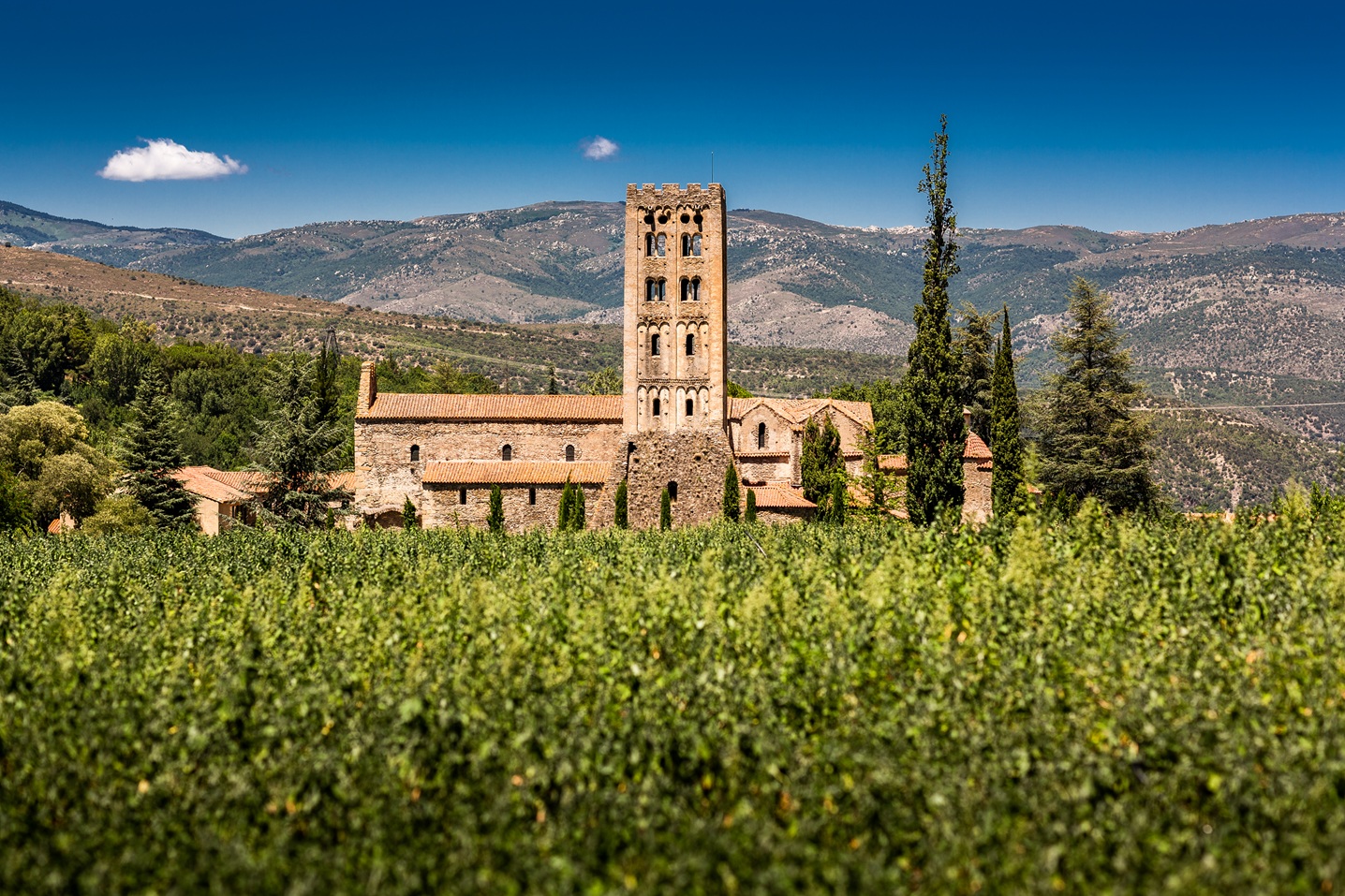Codalet

General information:
A village nestled between Prades and the mountains
Perched on the northern heights of Prades, Codalet initially appears to be a discreet neighborhood in comparison to its busier neighbor. Yet, its ancient streets, peaceful square, and authentic Catalan atmosphere are enough to give it a strong, deep-rooted, and unique identity.
A little history in every stone
The history of Codalet dates back to the first mentions in 850 under the name Cotaletum, in a document related to the Abbey of Saint-Michel-de-Cuxa.
The village developed around the Church of Saint-Félix, attested as early as 865. This church, remodeled over the centuries, tells the story of the evolution of a place of faith with medieval foundations.
The Romanesque Treasure: Cuxa Abbey
Dominating the commune to the south, the Abbey of Saint-Michel-de-Cuxa, founded around 878, is its most striking and mysterious figure, a reminder of a spiritual and artistic influence that resonated beyond the Pyrenees.
Invisible Architecture and Heritage
Codalet boasts other gems: the Church of Saint-Félix, the Hermitage of Saint-Jean de Dossorons, and a chapel dedicated to Saint-Pierre d'Orséolo, all linked to the ancient monastic influence. You can also discover the old presbytery, the town hall, fountains, a washhouse, and canals, sometimes dotted with remnants of ramparts that emerge here and there.
Sweet Life and the Fluctuations of Time
With approximately 350 to 400 inhabitants, known as Codalétois·es, Codalet has managed to maintain a warm, welcoming community—a community where, without formal associations, social bonds endure naturally.
Nature, Hiking, and Breathing
Located at an altitude of 350–380 m, the village is bathed in generous light. It offers an ideal starting point for exploring the Canigó trails, following the Têt Valley, and soaking up the tranquility of the verdant landscape.
How to get there?:
Conflent
Practical information:
What can't you miss?:
A village nestled between Prades and the mountains
Perched on the northern heights of Prades, Codalet initially appears to be a discreet neighborhood in comparison to its busier neighbor. Yet, its ancient streets, peaceful square, and authentic Catalan atmosphere are enough to give it a strong, deep-rooted, and unique identity.
A little history in every stone
The history of Codalet dates back to the first mentions in 850 under the name Cotaletum, in a document related to the Abbey of Saint-Michel-de-Cuxa.
The village developed around the Church of Saint-Félix, attested as early as 865. This church, remodeled over the centuries, tells the story of the evolution of a place of faith with medieval foundations.
The Romanesque Treasure: Cuxa Abbey
Dominating the commune to the south, the Abbey of Saint-Michel-de-Cuxa, founded around 878, is its most striking and mysterious figure, a reminder of a spiritual and artistic influence that resonated beyond the Pyrenees.
Invisible Architecture and Heritage
Codalet boasts other gems: the Church of Saint-Félix, the Hermitage of Saint-Jean de Dossorons, and a chapel dedicated to Saint-Pierre d'Orséolo, all linked to the ancient monastic influence. You can also discover the old presbytery, the town hall, fountains, a washhouse, and canals, sometimes dotted with remnants of ramparts that emerge here and there.
Sweet Life and the Fluctuations of Time
With approximately 350 to 400 inhabitants, known as Codalétois·es, Codalet has managed to maintain a warm, welcoming community—a community where, without formal associations, social bonds endure naturally.
Nature, Hiking, and Breathing
Located at an altitude of 350–380 m, the village is bathed in generous light. It offers an ideal starting point for exploring the Canigó trails, following the Têt Valley, and soaking up the tranquility of the verdant landscape.
How to get there?:
Conflent
Practical information:
What can't you miss?:
